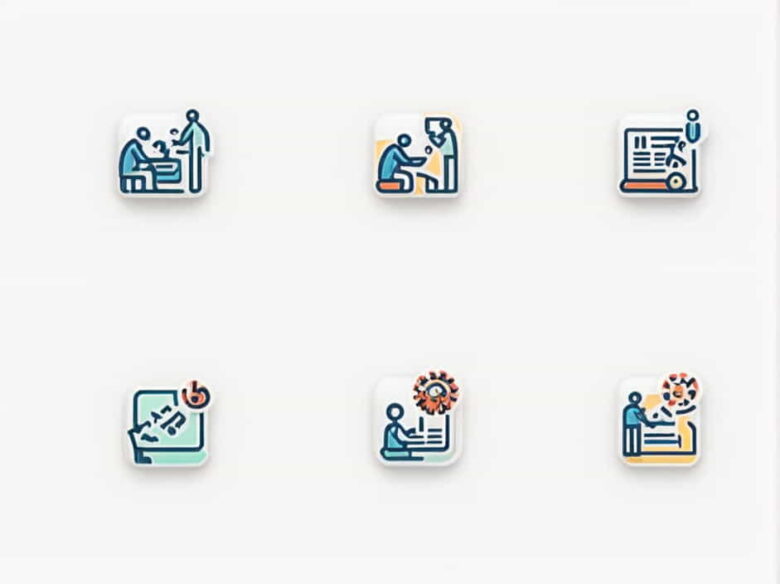Unemployment is a critical issue in economics, affecting individuals, businesses, and entire economies. Understanding the nature of unemployment helps policymakers, economists, and governments develop strategies to reduce joblessness and maintain economic stability.
Unemployment can be classified based on its causes, duration, and impact on the economy. This content explores the different types of unemployment, the economic theories behind it, and the ways economists analyze and address unemployment.
Understanding Unemployment in Economics
In economics, unemployment is considered a key indicator of economic health. High unemployment rates suggest economic instability, while low rates indicate a thriving labor market.
Unemployment is broadly defined as the condition where individuals who are actively seeking jobs cannot find employment. However, it is categorized into different types based on its causes and characteristics.
Types of Unemployment
Economists classify unemployment into several types, each with distinct causes and effects.
1. Frictional Unemployment
Frictional unemployment occurs when workers are temporarily unemployed while transitioning between jobs. It is a natural part of the labor market and happens when:
- Workers leave jobs voluntarily to find better opportunities.
- New graduates enter the workforce and take time to find a suitable job.
- People relocate and need time to secure employment in their new location.
Example: A software engineer resigns from a company and spends two months looking for a better job.
Frictional unemployment is short-term and generally not a major concern because it reflects a healthy job market where workers have opportunities to switch jobs.
2. Structural Unemployment
Structural unemployment arises when the skills of workers do not match the jobs available in the economy. It happens due to:
- Technological advancements that make some jobs obsolete.
- Changes in industry demand that reduce the need for certain professions.
- Geographic mismatches between workers and job locations.
Example: Factory workers lose their jobs due to automation, and they do not have the skills required for emerging technology-based industries.
Structural unemployment can be long-term and problematic because it requires retraining and education programs to help workers adapt to new job markets.
3. Cyclical Unemployment
Cyclical unemployment is caused by economic downturns or recessions. When demand for goods and services declines, businesses lay off workers, leading to rising unemployment.
Example: During an economic recession, companies reduce production and cut jobs, leading to a higher unemployment rate.
This type of unemployment is directly related to economic cycles and typically improves when the economy recovers. Government policies, such as stimulus packages and interest rate adjustments, are often used to reduce cyclical unemployment.
4. Seasonal Unemployment
Seasonal unemployment occurs when jobs are only available during specific times of the year. Certain industries experience fluctuations in labor demand based on seasons, weather conditions, or holiday periods.
Example:
- Agricultural workers may be unemployed during non-harvest seasons.
- Tourism jobs decline during off-peak travel seasons.
- Retail workers face job cuts after the holiday shopping period.
Seasonal unemployment is predictable, and many workers plan for periods of joblessness in advance.
5. Classical (Real Wage) Unemployment
Classical unemployment occurs when wages are too high for employers to hire all available workers. This happens due to:
- Minimum wage laws that set wages above the market equilibrium.
- Labor unions negotiating high salaries that companies cannot afford.
- Government policies that restrict wage flexibility.
Example: A company wants to hire 100 workers but can only afford to pay 80 due to high wage requirements.
Reducing classical unemployment often requires policy changes that balance worker wages with employer hiring capacity.
6. Hidden (Underemployment) Unemployment
Hidden unemployment refers to people who are technically employed but not fully utilized. This includes:
- Workers in part-time jobs who want full-time positions.
- Employees who are overqualified for their jobs.
- People who have stopped searching for jobs due to discouragement.
Example: A university graduate working as a cashier because they cannot find a job in their field.
Hidden unemployment is often undetected in official statistics, making it difficult to measure accurately.
Economic Theories on Unemployment
Different economic theories explain the nature of unemployment and suggest ways to manage it.
1. Keynesian Theory
John Maynard Keynes argued that unemployment is mainly caused by insufficient demand for goods and services. He believed that government intervention is necessary to boost employment during economic downturns.
Solution:
- Increase government spending to stimulate job creation.
- Lower interest rates to encourage business investments.
- Implement public projects to provide work opportunities.
2. Classical and Neoclassical Theory
Classical economists believe that unemployment results from rigid wages and government interference in the labor market. They argue that free markets should determine wages and employment levels.
Solution:
- Reduce minimum wage restrictions.
- Encourage wage flexibility based on supply and demand.
- Minimize government intervention in labor markets.
3. Marxist Theory
Karl Marx viewed unemployment as a necessary feature of capitalism. He argued that businesses maintain a pool of unemployed workers to keep wages low and maximize profits.
Solution:
- Implement strong labor protections.
- Reduce income inequality through wealth distribution policies.
- Increase worker rights and benefits.
Effects of Unemployment on the Economy
Unemployment has significant consequences for individuals and the economy as a whole.
1. Economic Slowdown
High unemployment reduces consumer spending, leading to lower demand for goods and services. Businesses may suffer losses, causing further job cuts.
2. Increased Government Spending
Unemployed individuals rely on government assistance programs such as unemployment benefits, healthcare, and food aid. This increases public spending and national debt.
3. Social Issues
Long-term unemployment can lead to:
- Higher crime rates due to financial desperation.
- Increased mental health problems, such as depression and anxiety.
- Lower educational opportunities for children in jobless households.
4. Skill Deterioration
Workers who remain unemployed for long periods may lose their skills, making it even harder to re-enter the workforce.
How to Reduce Unemployment?
Governments and policymakers use various strategies to reduce unemployment rates and promote job creation.
1. Education and Training Programs
Providing workers with new skills and certifications helps them transition into industries with job demand.
2. Encouraging Entrepreneurship
Supporting small businesses and startups creates new jobs and reduces reliance on traditional employment sectors.
3. Infrastructure Development
Investing in roads, transportation, and public projects generates employment opportunities across multiple industries.
4. Monetary and Fiscal Policies
- Lowering interest rates encourages businesses to expand and hire more workers.
- Government stimulus spending boosts economic activity and creates jobs.
5. Labor Market Reforms
- Reducing excessive regulations to make hiring easier.
- Promoting fair wage policies that do not discourage employment.
Unemployment is a complex economic issue influenced by market conditions, government policies, and technological advancements. It is categorized into different types, including frictional, structural, cyclical, and seasonal unemployment, each requiring unique solutions.
Understanding the nature of unemployment allows economists and policymakers to develop effective strategies to stabilize labor markets, create jobs, and ensure economic growth. By implementing education programs, supporting businesses, and using smart economic policies, societies can work towards reducing unemployment and improving quality of life for all citizens.



